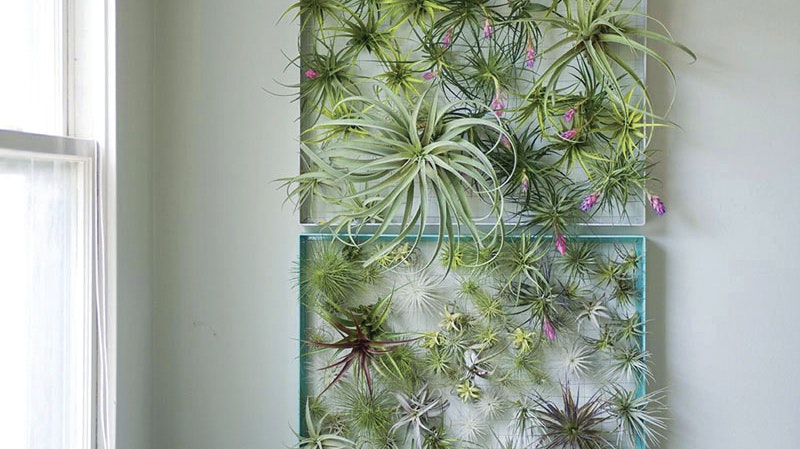How Does Your Garden Grow
A 2017 survey found that the average British garden is 50ft in length, has 10 varieties of plant, a set of garden furniture, a barbecue, a water feature and a solitary gnome. The city-dwelling reader is perhaps wondering if the survey confused feet with pixels: “I’ve got far too much outdoor space,” said no Londoner ever. But with minimal expenditure and a willingness to learn, it’s entirely possible to cultivate new life on even the tiniest sliver of windowsill, balcony or courtyard. Start with these helpful tips from Urban Growth, the green fingers behind the Peninsula’s floating garden, whose open gardening sessions and skills workshops are inspiring Londoners the city over to dig their way to health and wellbeing.
Right Plant, Right Place
For every cactus requiring industrial quantities of vitamin D, there’s a woodland creeper that’ll thrive in dimly-lit dankness. The trick is knowing your conditions. Does your space offer abundant daylight? Then you’ve got a long menu of tropical plants to choose from. If your outdoor patch is worthy of a walk-on part in a Nordic crime drama, scour your local garden centre for any number of plants that shun the sun. You could try Heuchera, an ever-green plant with a crazy range of food-themed names to suit their eccentric colours. Although they’re named after cookies and cream, cherry cola, caramel and sugar plums, be warned, they’re unfortunately not edible. However they thrive in the most challenging locations, they have rich colours all year and sprout bright flowers that will be magnets for bumblebees in summer.
Herbs have specific needs too, so choose wisely. Rosemary, thyme and lavender grow wild on the sides of dry, sandy cliffs, so if your kitchen windowsill is more Mile End than Mediterranean, check the labels for crops that enjoy low lighting, like parsley, mint and chives.
Think Out of the Window Box
If sills and ledges are few and far between, you can still become an urban gardener—you’re just going to have to get creative. Search Pinterest for Tillandsia (air plants) and you’ll discover a cult of urban growers who find inspired ways to work with this South American perennial, whose short, wiry roots require no soil. Hang it from a fishing line around a door frame, wrap around a log propped up in the corner of a balcony, or suspend from a bird cage, terrarium or bell jar for a truly modern take on the hanging basket. If horizontal space is non-existent, air plants can also be used to create so-called moss walls, whose popularity has increased in correlation with the shrinking of London’s gardens. If you’re flush, specialist contractors can turn your wall into something akin to a vertical lawn, but there are DIY kits if you really fancy a challenge.
Plants Are the New Pets
Puppies and kittens require settling in time with their new owners and plants are much the same. You don’t have to go as far as requesting ‘planternity’ leave from your employer, but your plant may have been regularly moved around a retailer before you lugged it up the Jubilee line, so it’s likely to be in need of TLC. For the occasional or novice gardener, there’s a strong correlation between neglect and failure, but there’s a balance to be struck. Plants, like pets, dislike over-stimulation, so avoid too much chopping and changing. As the Chinese proverb says: You won’t help shoots grow by pulling them up higher.
“"With minimal expenditure and a willingness to learn, it’s entirely possible to cultivate new life on even the tiniest sliver of windowsill, balcony or courtyard."”
Step Away from the Watering Can
Pots are a brilliant solution for the space-strapped gardener, but they should come with a warning sign for the rooky gardener, who can easily forget that while roots need water, they also need to breathe. Ergo, the number one cause of pot plant death? Drowning. A droopy plant may be a thirsty plant, but if it was recently doused, its limpness is more likely a symptom of over-saturation. Ensure all your pots have proper drainage, and before you reach for the hose, check that the soil has dried out completely. If you’ve done all that and your new urban oasis is still looking more Dust Bowl than Chelsea Flower Show, find a good quality feed. In the absence of space for a compost heap, choose a bottle of liquid seaweed. This eco-friendly wonder tonic improves the soil structure and encourages positive microorganisms. If your plants are looking old and tired, give this a go and watch them flourish.
Roll Up Your Yoga Mat
A (not-entirely-extensive-or-scientific) study by the Royal Horticultural Society found that talking to plants really can help them grow (tomato plants read an extract from On The Origin Of The Species grew an average two inches taller than those in the control group). It’s unlikely those larger vines were responding to Darwin’s theory of evolution; more that they thrived due to the all-round care and attention they received by the type of owner who chats to their pots. Plus, regular observation of your green friends is, happily, a great addition to the clutch of meditation apps and books in favour. Caring for another lifeform, responding to its needs and watching it thrive speaks to an inbuilt human need to nurture and create. It’s empowering. It’s liberating. It requires your focus in a way that’s much more organic than responding to the instructions of a breathe-deep app. Keep calm and dig on.
Urban Growth holds free gardening sessions with the local community on The Jetty. Find out more at jetty.greenwichpeninsula.co.uk
Tips for Small Gardeners
- Increase the life expectancy of a supermarket herb by carefully splitting the roots and re-potting into three or four new pots with fresh soil.
- Container depth depends on your crop. As a general rule: the longer they live, the deeper the roots so the bigger the pot.
- Indoor windowsills with indirect sunlight are perfect for growing rocket, baby cabbages or salad leaves. Go easy on the water—tiny seeds are vulnerable to rotting.
- Join a thriving community like Project Dirt or Capital Growth to access free or cheap training and meet other gardeners.
- Sow your seeds a week before the full moon and they might just grow quicker. Look up ‘biodynamic gardening’ to learn more about this fascinating theory.
- Kids love growing experiments so get your little people involved. A runner bean in a cup with a wet paper towel will yield interesting new crops. Search YouTube to discover how to grow new veg from peelings and scraps.
- *That’s those with limited outdoor space, rather than the vertically-challenged.







